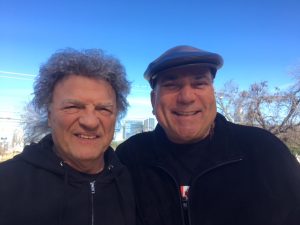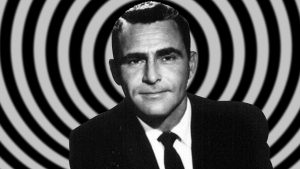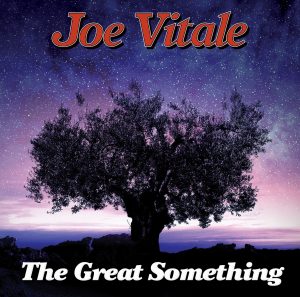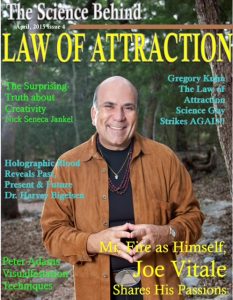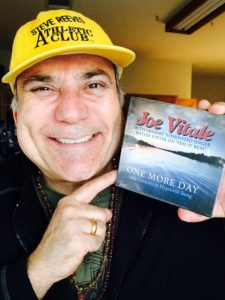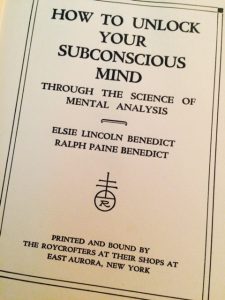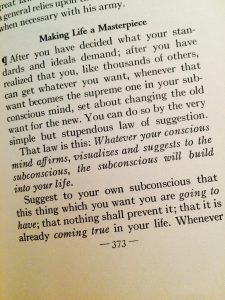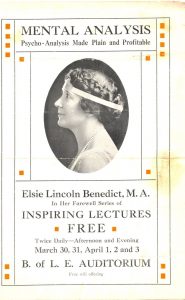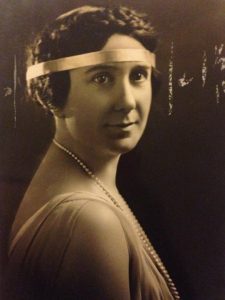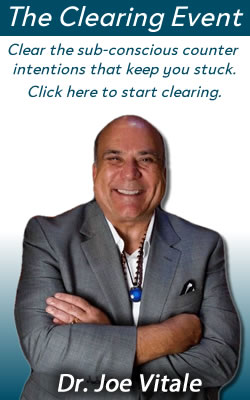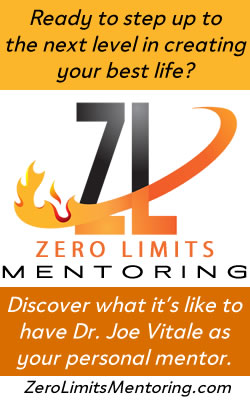Tag: neuroplasticity
Twilight Zone Self-Help
When my drummer was here recently for the recording of my sixth self-help singer-songwriter album, titled The Great Something, he talked about how much he loved the old 1960’s hit television show, The Twilight Zone.
It’s Twilight Zone-ish enough that my drummer has the same name as me, grew up in the same area of Ohio as me, and went to the same college as me – but we never met until five years ago, for the making of my first singer-songwriter album.
But it gets even stranger when one night an episode of The Twilight Zone aired on television – one I don’t recall ever seeing before.
As I watched, an idea for an “instant change” self-help technique came to me with a jolt.
Oh, this is good, I thought to myself, laughing.
Wait till I tell everyone about this!
And this is where the story gets really interesting.
But let’s start at the beginning.
I’m a huge fan of The Twilight Zone TV show.
I was five years old when it first aired in 1959, but I saw virtually every episode after that, and still watch them today. Each show was genius. Great acting, great stories, great lessons.
Over half of the 150 episodes were written by the man who created the show: Rod Serling.
Serling deeply influenced me when I was a teenager.
I studied his scripts, short stories, and movies to unlock his mastery at writing.
I loved his screenplays for Seven Days in May and Requiem for a Heavyweight.
Talk about hypnotic writing!
Rod Serling’s Advice to Writers (1962)
DON’T LET SENTIMENTALITY REAR ITS UGLY HEAD!!!
MAKE PEOPLE THINK… STUN THEM… GRAB YOUR AUDIENCE IMMEDIATELY
DON’T OVERLOAD DIALOGUE
HAVE A POINT OF VIEW… DON’T ACCEPT SOMEONE ELSE’S CONCEPT
OVERALL THEME LEADS TO CHARACTERS THEN ON TO PLOT
RESEARCH BACKGROUND FOR ANY STORY
CONTINUITY… TIE SCENES OR PARAGRAPHS TOGETHER
I almost signed up for the Famous Writers School, as Serling was on their board (as was John Caples, another writer who would influence me decades later).
It didn’t happen. I was still in high school, and my parents couldn’t or wouldn’t swing the tuition for the correspondence course.
But something even better happened.
I met Rod Serling.
He was giving a presentation in Youngstown, Ohio, not far from my home. Two friends and myself went to hear the great one speak. It was around 1970.
I was too excited to sit still.
I was star-struck and eager to meet the icon.
He walked out on stage, cigarette in hand, tanned, tiny, unshaven, tight lipped, and uncomfortable.
I was instantly disappointed.
Serling was a chain-smoking little man with darkness and insecurity in him.
He said if there was a thump at night, he’d be the first one outside in his shorts.
He said he was the only boxer who had to be carried into as well as out of the ring.
He was articulate, self effacing, and entertaining.
But I wanted to see a super human, not a mortal.
Though I was shy and nervous, I managed to ask him a question.
I raised my hand.
He nodded at me.
“Do you plan to write your autobiography?” I asked.
“No,” Serling replied. “Nothing much has happened in my life. It’d be boring.”
I was shocked.
Here was one of early television’s most influential writers.
A creative mind on the level of genius.
He wrote screenplays for some of the most haunting TV shows and movies ever.
He won several Emmy Awards for his work.
He served in the war and received the Purple Heart and Bronze Star, as well as trauma and wounds that would give him nightmares his entire life.
He was known as “the angry young man” of Hollywood, fighting with TV executives over censorship, racism, and war.
He was also unhappy.
“I was traumatized into writing by war events,” Rod Serling explained. “By going through a war in a combat situation and feeling the desperate sense of terrible need for some sort of therapy. To get it out of my gut, write it down. This is the way it began for me.”
And he thought his life story would be boring???
It was a turning point for me.
I decided if this insecure man can become a scrip writing legend, than there was a chance for me to make it as an author, too.
And now, before I get to the point of this entire article, let’s pause for a commercial break….
Be the first! Preorder my new album “The Great Something” as a limited edition collectible audio CD. All original transformational songs. All dedicated to Melissa Etheridge. You’ll get a surprise bonus gift when it ships in March. See http://www.thegreatsomethingalbum.com/
And now let’s continue with this article….
Back to the episode I saw the other night.
It took place in an office.
A businessman is talking to his secretary.
He is preparing to go on a trip.
He goes to his phone, starts to dial his wife’s number, when suddenly someone shouts, “CUT!”
The man freezes.
He watches as his office walls are moved.
And then he sees an entire film crew looking at him.
He is on a movie set.
The yelling of “CUT!” caused him to freeze.
He is almost traumatized by this turn of events.
He didn’t know he was on a set, or in a movie, or was an actor.
Imagine how you would feel if right now you heard a booming voice yell “CUT!” and then you saw the walls around you move apart, only to reveal a film crew that has been watching you the whole time.
The episode is from 1960. It’s #23. It was written by Richard Matheson. It’s called “A World of Difference.” Howard Duff is the key actor. Find it and watch it sometime.
And now let’s get to the point:
Here’s how I discovered a self-help “instant change” technique:
Whenever you notice anything not going the way you want it to, mentally or out loud yell, “CUT!”
And then do, think or say something different.
Use “CUT!” as a command to change your mind or even a situation.
For example:
A friend was complaining about her day.
I listened for a moment.
Then I blurted, “CUT!”
She stared at me.
“Let’s redo this scene,” I said. “Say your lines differently this time.”
I had to explain the entire Twilight Zone episode to her before she understood what I was doing, but my “pattern interrupt” caused her to smile and begin a new conversation.
Another example:
I was served dinner at a restaurant.
I was about to complain about the dish when I remembered that complaining doesn’t help. It’s far wiser to state an intention instead.
So I yelled “CUT!” in my head.
“State what you want,” I told myself, “not what you don’t want.”
I then stated that I wanted my food heated up a little more, and the server smiled and handled it. No one was offended by a complaint, and I got what I wanted from the intention.
Do you see how this works?
I’m simply pretending that life is a stage play or television show.
As long as “the show” entertains me, fine.
But if I or someone in my real life reality show gets “out of tune” or goes “off script,” I can simply say “CUT!” and “Let’s do the scene again!”
“In almost everything I’ve written, there is a thread of this: man’s seemingly palpable need to dislike someone other than himself.”- Rod Serling
My own philosophy of life states that life is an illusion, anyway.
We’re all actors and actresses on the stage of life.
The problem is, we are all in a hypnotic trance and believe our roles.
“Awakening” is all about realizing you are acting out a script, though unconsciously.
By saying “CUT!” and pausing, you start to awaken from the trance and redirect your life.
In a real sense, you become the scriptwriter of your own life.
How cool is that?
I’m having fun using this self-help method in my daily life.
If I notice my thoughts start to go downhill, I just yell in my mind, “CUT!”
And then I choose to “redo my lines” by thinking more upbeat thoughts.
I doubt anyone involved with the making of The Twilight Zone ever thought of this way of retraining your brain and interrupting patterns, but I like thinking Rod Serling is smiling from above.
If not, then “CUT!” and “This time put a smile on your face, Rod!”
Ao Akua,
PS — One of my favorite screenplays by Rod Serling was titled, Patterns. It was a live television drama in 1955. It became a movie in 1956. Yelling “CUT!” is a great way to break a pattern. Just sayin’.
Law of Attraction Songs
This exclusive article was first published in the April 2015 issue of The Science Behind Law of Attraction national magazine and in the April 2015 Austin All Natural Central Texas magazine. It’s mostly about the Law of Attraction songs on my latest singer-songwriter album, One More Day: Life Lessons in Hypnotic Song, which is sold out as a collectible CD/Book but now available for download on iTunes or from http://www.cdbaby.com/cd/onemoreday
Law of Attraction Songs
From The Secret movie to World’s First Self-Help Singer-Songwriter, Bestselling Author Joe Vitale Releases Fifth Album of LOA Songs
“They are like complete self-help books in 3 minute song.”
An Exclusive by Dr. Joe Vitale
If you ever felt “I can’t get what I want,” you might thank the Rolling Stones. Their music, and much popular music, innocently but effectively programs listeners for lack and limitation. Their song, “You Can’t Always Get What You Want,” started installing that limiting belief in listeners in 1969. Few think of music as an agent for programming, though. And few would look at that song as a type of brainwashing.
Yet music can slow down our progress with the Law of Attraction, and even prevent attracting what we want. It all happens unconsciously, of course. But that’s how the Law of Attraction works: you attract a match to your unconscious beliefs, not necessarily to your conscious ones.
While I like the Rolling Stones, too, I wanted to do something about music that limits. So I studied song writing, gathered experienced musicians, and recorded music that does the opposite: it joyfully rewires you to attract magic and miracles.
For example, the song “Feel It Real,” on my brand new album, One More Day: Life Lessons in Hypnotic Song, advises you to attract what you want by feeling it real. To add impact, I had Grammy nominated singer Ruthie Foster add her soaring vocals to my lyrics. Now you have a song that sounds great, feels great, and also programs you for a better life.
The song “The Hook” is a song I wrote to remind you not to take any “hooks” from other people, meaning don’t let them push your emotional buttons or engage you in a negative way. The song’s rocking mantra of “Don’t Take the Hook” becomes an awareness technique so other people don’t bring your vibration down. As long as you stay aware of “hooks” in life, you can stay peaceful, and focus on attracting what you desire.
And the title track song is a barnstorming rocker, made with Rock and Roll Hall of Fame drummer Joe Vitale (yes, he has the same name as me). It motivates you to “seize the day!” It says you have “one more day” so you better take action and go for your dreams right now. Today!
Then there’s a jazzy track called “Shock Yourself,” which is about getting out of your comfort zone. Too many of us get the same results every day because we do the same things and think the same things every day. The formula needs shaken up. The song urges you to “Jump and skip, chase away the blues…You are here to laugh and sing…You are here to live, not rust.” Again, the blend of words and music, with bass guitar by Glenn Fukunaga, flute by the other Joe Vitale, guitar by producer Daniel Barrett, come together to make a song that is hypnotic.
Music works on our body and mind in mysterious and wonderful ways. The melody can put you in a trance. I know from my work in hypnosis that when you are in even a light trance, you can accept beliefs. The words in a song can get installed in your mind. They are affirmations to music. You can become a new person in minutes with the right song. You could also become an unhappy person in minutes with the wrong song.
Every song on my new album is like a condensed self-help book. Instead of taking an entire volume to deliver the message, these songs do it in about three minutes.
For example, the song “Deep Within” points to the power center within you, beyond your mind and emotions. It guides you “deep within” to the soul or Witness behind it all. From there, you can attract whatever you imagine.
And the fun song, “Some Thoughts,” reveals that some of our thoughts are helpful and some are not. It advises you to pretend you have a “jukebox in your mind” so you can change your thoughts by reaching for the ones that make you feel good. It’s like changing a tune on the radio or on your audio player. It’s basic Law of Attraction in song.
I also have two instrumental tracks on the new album, created with me playing baritone saxophone on one and baritone guitar on the other, that are mind adventures. You can just listen as the music raises your vibration. These are also great tracks to relax to as you visualize what you want to have, do, or be.
It’s probably important to realize that I became a musician by attracting it. I wasn’t always a musician. I decided to be one when I was about 57 years old. It was on my “bucket list.” I had all the doubts and fears that anyone else might have attempting something new, but I also knew that “some thoughts” would help me become a musician and some would not. I went with the thoughts that were positive and supportive. And I made sure to “feel it real.”
Now, at the age of 61, I have eleven albums out, with One More Day being my fifth singer-songwriter offering. Many of the instrumental albums I recorded with Guitar Monk Mathew Dixon are bestsellers. I’ve also been voted #1 singer-songwriter by Reverbnation. And several of my songs have been nominated for the Posi Award, considered the Grammy’s of positive music. I’m sharing this not to brag, but to let you know that you, too, can attract your dreams. Anything is possible.
I still love the Rolling Stones, but I’m aware that unless you stay alert, their catchy tunes (and many others by other bands, not just the Stones) can help you create a reality you don’t want.
If you want to use music to help you use the Law of Attraction in more joyful ways, listen to music that is upbeat, positive, and makes you feel like the super being you really are.
Dr. Joe Vitale is the globally famous author of numerous bestselling books, such as The Attractor Factor and Zero Limits, a star in the hit movie The Secret, founder of Miracles Coaching and The Secret Mirror, inventor of Hypnotic Writing, and a man “on fire” to live his passions and help the world. His main site is www.JoeVitale.com His new album, One More Day, is at www.OneMoreDayCD.com All of his LOA albums are at http://www.allhealingmusic.com
The Window
The more books I read about free will, neuroscience, and neuroplasticity, the more I realize that each of us has “a window” of awareness.
It’s The Window in your mind where thoughts appear.
It’s the mental place where you can consciously choose to follow, or not, the thoughts that come to you.
But you can’t consciously act on or reject any thought you haven’t witnessed in that window of your mind.
And for now, you don’t have control over what thoughts occur to you.
To prove this, predict your next thought.
Go ahead and try.
You can tell me what it is after you think it, but you can’t tell me what it will be beforehand.
That means that your thoughts come from somewhere else and appear in your “window” of awareness for you to then observe.
You don’t think thoughts; they think you.
Where do thoughts come from?
In the ho’oponopono tradition (as written about in my books Zero Limits and At Zero, and as taught by Dr. Hew Len), your thoughts arise from the programs or data in your subconscious/unconscious mind.
Programs are mental paradigms, mindsets, perceptions and more. They are memories.
In neuroscience, the thoughts arise from your unconscious storehouse of beliefs, experiences, and more.
They are pretty much saying the same thing: thoughts appear from what’s in your subconscious mind.
In both views, your thoughts “appear” from somewhere out of your full conscious awareness.
Your thoughts are appearing in “the window” of your conscious mind, bubbling up from what is hidden in the mind below, from an underground database of memories/beliefs/data.
This is so important that I’m not even sure where to begin to explain it.
For example –
If you are trying to attract money but struggling at it, it isn’t your fault at all.
The programs in your unconscious are not allowing you to see the opportunities for wealth around you.
It’s as if you are wearing blinders, goggles, or filters.
The hidden data in your mind about money is what allows or prevents thoughts about money to enter “the window” of awareness in your mind.
What sort of hidden beliefs might keep money away?
Money is bad.
Money is evil.
Money is not spiritual.
Money is not good for me.
And so it goes.
Any limiting program in the subconscious is the “blinder” preventing you from seeing anything that could help you.
What enters “your window” of awareness is based on your programs.
Change the program and you see a different reality.
New thoughts will arise.
And in “the window” you will see new choices.
You can still ignore what appears in “the window” of your mind.
Some call that free will.
But it might be more accurate to call it “free won’t.”
When a thought floats into your window of awareness, you can act on it or not.
You have the freedom to decide once you are aware of the thought.
But your “window” is the only place you get to consciously choose anything, and what appears in that window will come from your secret mental software – unless you start working with the programs and data in your unconscious/subconscious.
How do you change the hidden programs?
There are numerous ways, and I’ve written about them in many books, such as The Key, and spoken about them in many audio programs, such as The Zero Point and The Missing Secret.
I also started Miracles Coaching so you can have one on one assistance in working with your database of hidden beliefs.
A new way to begin dealing with the hidden programs is with what I call The Fourth Dimension Process.
I wrote a Special Report about it which you can have, free, by clicking here: The Fourth Dimension Process: Hyper-Manifestation for Wealth.
This brand new report reveals the process and proves it works by explaining how I used it to manifest one of the biggest goals of my entire life.
I also just taught it, with the help of Dr. Steve G. Jones, to a group of eight people in a private seminar in Las Vegas.
Every person loved it and said — on camera — that it transformed them.
I think you’ll like it, too.
Meanwhile, consider where your thoughts are coming from.
Even right now, whether you like your thoughts or not, notice that the thoughts seem to float into The Window of your awareness from someplace else.
And then consider how you respond to those thoughts.
Again, you have free will.
And free won’t.
The point is, if you are trying to attract or achieve something and not succeeding, it most likely isn’t what you are consciously thinking, but what you are un-consciously believing.
Think about it.
Ao Akua
Joe
PS – Whatever you are thinking right now just bubbled up from your subconscious/unconscious/collective unconscious database of programs. It’s now in “The Window” of your awareness, where you can act on the thoughts, or not. But even your action is based on what is in your programming. No foolin.’ 🙂
Your Secret Desire
Elsie Lincoln Benedict – the forgotten wonder woman of self-help who I wrote about here on my February 15, 2015 blog post – taught me something profound.
I was reading her 1921 book, How to Unlock Your Subconscious Mind (sometimes called Mental Analysis: How to Unlock Your Subconscious Mind) when I came across this insight in the final chapter:
“Whatever your conscious mind affirms, visualizes and suggests to the subconscious, the subconscious will build into your life.”
For you and I today, that’s probably not news. But in 1921, it was a breakthrough new concept.
It basically said that you could choose what you want with your conscious mind, and with intention and imagery, you could get it into the subconscious, where it would take seed and begin to grow.
Why is this so important?
Because Elsie said something else right before revealing that concept that was even more insightful, and something so profound that I had to reread it a few times.
Elsie wrote –
“This newest, hitherto unpublished and most far-reaching of all the discoveries concerning the laws of human life is that every human being GETS his supreme subconscious wish.”
In short, there is a type of prime directive in your subconscious mind.
It is the secret guiding desire for your life.
You may not know what it is, but your subconscious is attracting into your life everything to make it real.
What you are getting right now is a match to the secret desire of your subconscious – your “supreme subconscious wish.”
In my own work, I talk a lot about counter-intentions.
A counter-intention is a hidden belief in contrast to what you consciously say you want.
You might consciously say you want a new job, but unconsciously believe you won’t get one due to the economy (or some other excuse/reason/belief), and your unconscious, being more powerful, will make the counter-intention come true.
Elsie would probably agree but her deeper insight is that the subconscious has one major intention and it will allow nothing to come about to contradict it.
Elsie explains –
“Let us repeat: Your supreme subconscious wish dictates your life. It permits nothing seriously to interfere with its materialization. It is automatic, implacable. What you want most of all, as a condition in your life, it will get for you.”
Now think about this.
If your conscious intent is to attract more money – for yourself or others or causes you believe in – but your secret subconscious wish is to avoid money so you consider yourself “spiritual,” then your subconscious mind will make sure that you get your chief hidden intention — and stay broke.
Your subconscious secret desire will win.
It’s the same scenario with anything you can name.
Want a relationship but secretly want to stay alone because it feels safer?
Then nothing you do will work because the secret intent of your subconscious will control the outcome. You will be alone but “safe.”
Want better health but secretly want to stay ill so you can avoid taking actions and risks in the world?
Then your overriding subconscious desire will make sure you stay ill. You will be sick but “risk free.”
Elsie goes on to explain that your secret desire is for a feeling or condition, not anything specific. She says –
“Our supreme subconscious wish is never for any specific thing or person but for a condition, a certain avenue of self-expression.”
Elsie’s insight, offered in 1921, is a mind opener.
Here’s why –
First, realizing you have a secret subconscious “prime directive” helps explain why you are attracting what you have in your life: your subconscious insists on it.
Second, realizing you can change your subconscious secret desire to something else – with your conscious mind affirming and visualizing a new outcome – is enlightening and empowering.
Once again, Elsie has rocked my world.
I trust you see the power of these insights from our dear woman of the 1920s.
But here’s a suggestion –
You can sit and reflect on what your subconscious might want for you, which will help explain what you are attracting into your life.
You can then use your conscious mind to offer new instructions to your subconscious, reprogramming it to help you attract more of what you consciously prefer.
Got it?
Elsie was pointing the way to the hidden operations in our mind, long before positive psychology and neuroscience came into play.
Thank you, Elsie.
I love you.
Ao Akua,
Joe
PS – Unraveling your own beliefs can be tricky, since you are the one wrapped up inside of them. The fastest way to expand your mind is with the help of your own Miracles Coach. Check out Miracles Coaching.

